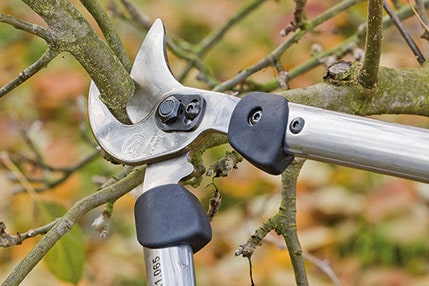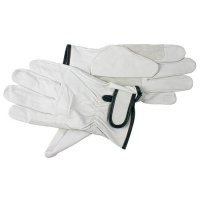
Shrubs are wonderful plants in the garden and often serve as privacy screens, living fences and red, white or pink flowering habitats for birds, rodents and insects. If you want to enjoy your shrubs for a long time, appropriate care must not be neglected. As with all plants, cut back regularly so that the shoots and flowers come back all the stronger. Pruning is like a rejuvenating cure for plants. It also ensures that hedges and shrubs stay in shape and don’t overrun your whole garden.
When is the right time to prune shrubs?
Shrubs and the like need to be pruned regularly - that much is clear. However, opinions differ among gardeners as to when this pruning should take place. In Germany, there is also a legal guideline to follow in this regard: The German Bundesnaturschutzgesetz (Federal Nature Conservation Act) prohibits pruning of shrubs, hedges, living fences, bushes and other woody plants from 1 March to 30 September. This regulation serves to protect birds, insects and small animals that use dense hedges and bushes as nesting sites. However, this refers more to a radical cut than the selected pinching off of individual branches or gentle maintenance pruning.
Pruning is carried out in winter or summer. Winter pruning of woody plants and shrubs has the advantage that the plants are not in sap and therefore do not lose as much vigour. Shrubs that have been pruned in winter usually grow back stronger and produce more beautiful flowers. In addition, the plants are without leaves in winter, which makes pruning easier. Nevertheless, the gardener should not do without protective Gardening Gloves, since there is a risk of injury at any time of year, especially when removing branches and twigs.

Maintenance pruning of spring- and summer-flowering plants
The right time to prune depends on the plants’ flowering times. For summer bloomers or rambling roses, pruning in spring or early summer is a good way to encourage and shape the bloom. Especially with summer-flowering plants such as buddleia, annual mallow, hydrangea or Russian sage, garden experts recommend cutting back the shoots from the previous year very short. What remains are short stumps with a maximum of two buds. With summer pruning, the cuts caused by severed branches and twigs heal more quickly than with winter pruning. There is no danger of frost permanently damaging the fresh cuts. This rule of thumb applies to all plant varieties: shrubs, trees, hedges.
Spring-flowering plants, which usually form their buds in the previous year, are definitely not pruned in winter or spring. Otherwise the buds would fall victim to maintenance pruning. With these plants, the gardener grabs the Pruning Shears every three years after flowering. Typical spring-flowering plants include the ornamental currant, honeysuckle or lilac. The three-year pruning is quite sufficient to strengthen the plants and keep the flowering shrubs in shape.
How do I prune hedges properly?
In most gardens there is another type of woody plant that could do with pruning: the hedge. Many gardeners trim hedges with Hedge Shears around Midsummer’s Day - i.e. 24 June. If you prune hedges in mid to late June, one cut a year is often enough.
However, experts recommend cutting hedges and living fences for the first time, as early as February. As already mentioned above, the advantage of early pruning is that the woody plants are not yet in sap and tolerate maintenance better. This strengthens the plant as a whole and makes it grow back more densely. In addition, the hedge keeps its shape for much longer. The second cut of the hedge then takes place around Midsummer’s Day.

When do my plants need pruning?
In principle, the maintenance pruning of shrubs, evergreens and hedges serves to preserve the plants. Woody plants that are regularly cared for sprout more vigorously, form more beautiful flowers and enhance your garden for many seasons. Gardeners should, however, not get carried away when working with hedge trimmer and loppers. The following applies to shrub care:
• Prune spring-flowering plants every three years after flowering.
• Prune shrub species that flower in summer in the spring.
• Trim hedges twice a year.
• Always remove diseased and dead branches as needed.
• For seedlings that develop poorly, radical pruning can give them a new lease of life.
• Heavy pruning, which goes beyond traditional maintenance pruning, may only be carried out between October and February to protect birds and small animals.
• If you are at a loss: The manufacturer's plant label also gives tips on care.
• The reference book Alles über den Gehölzschnitt offers valuable knowledge about shrub care over 380 pages (in German).


What are the right tools for cutting shrubs and hedges?
Work or Gardening Gloves are definitely needed for shrub care. Gloves made of leather have the advantage that they are extremely resistant - which is definitely an advantage when dealing with bushes with thorns and sharp branches. Then, of course, the gardener needs different shears and trimmers. For thinner branches and twigs you need sturdy Pruning Shears. No garden should be without this tool, because it is used almost all year round. Small pruning shears are equally suitable for roses, vines, shrubs and boxwood hedges. The clever gardener puts a Topiary Cloth underneath when pruning, then the cuttings are tidied up in a few seconds.
For hedges, the gardener needs a hedge trimmer. The blade length depends on the size and shape of the hedge. Hedge Shears with Short Blades are intended for topiary. Hedge Shears with 30 cm Blade Length and more are perfect for pruning. These can also be used to bring overgrown garden hedges back into shape.
The basic equipment also includes a Gardening Apron, which offers enough space for tools, pruning shears and gloves. This puts an end to misplacing garden tools.







